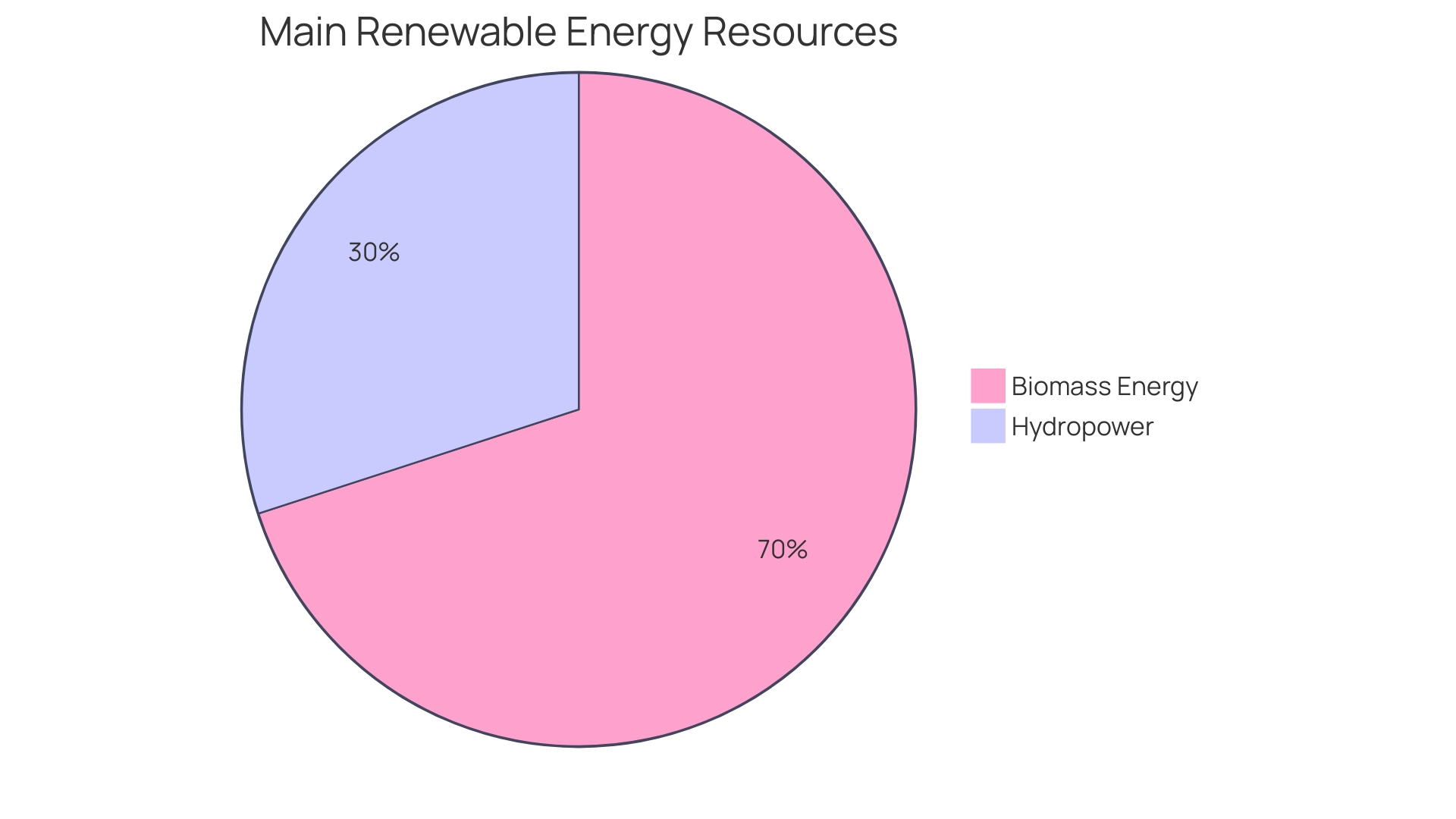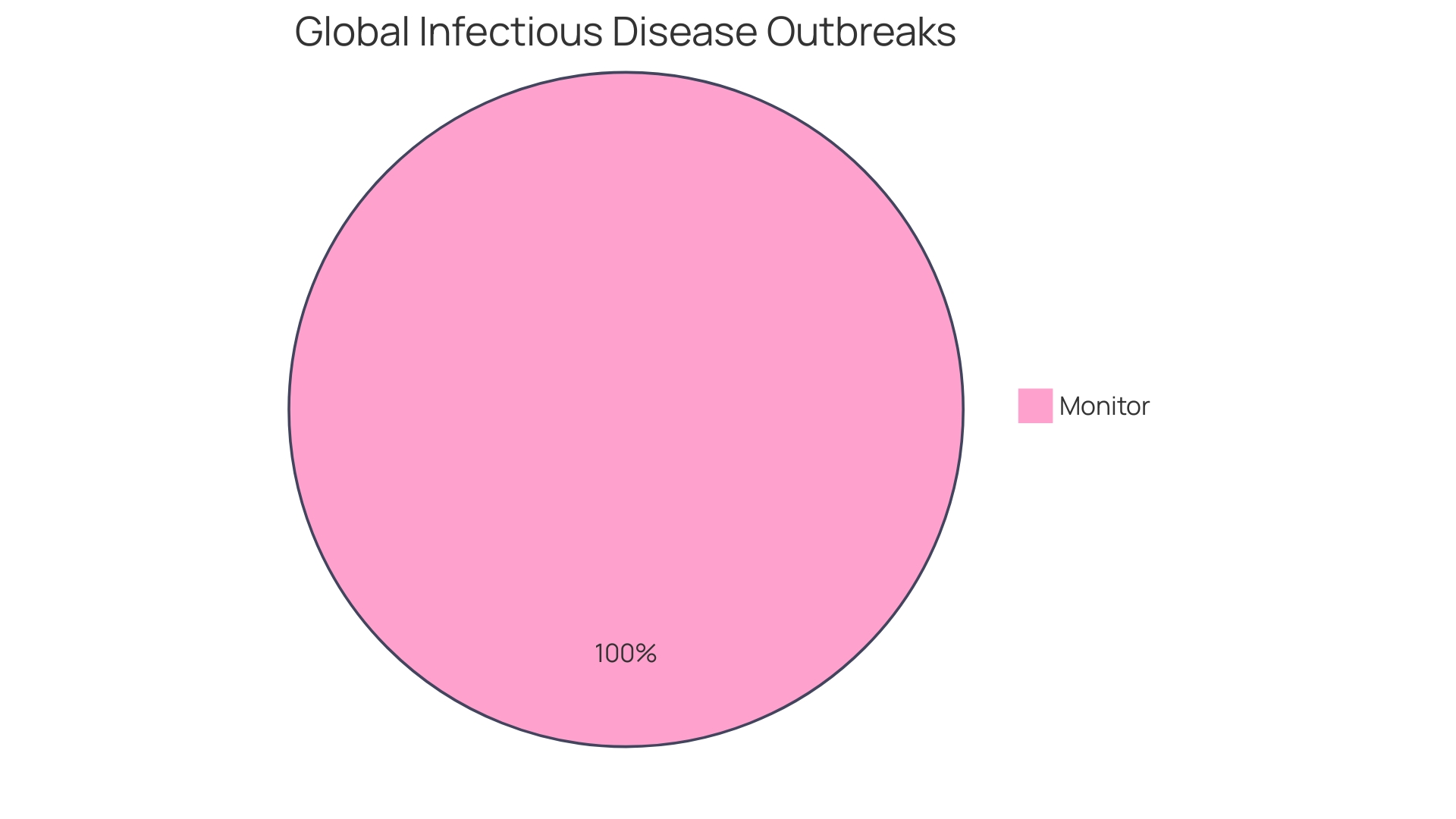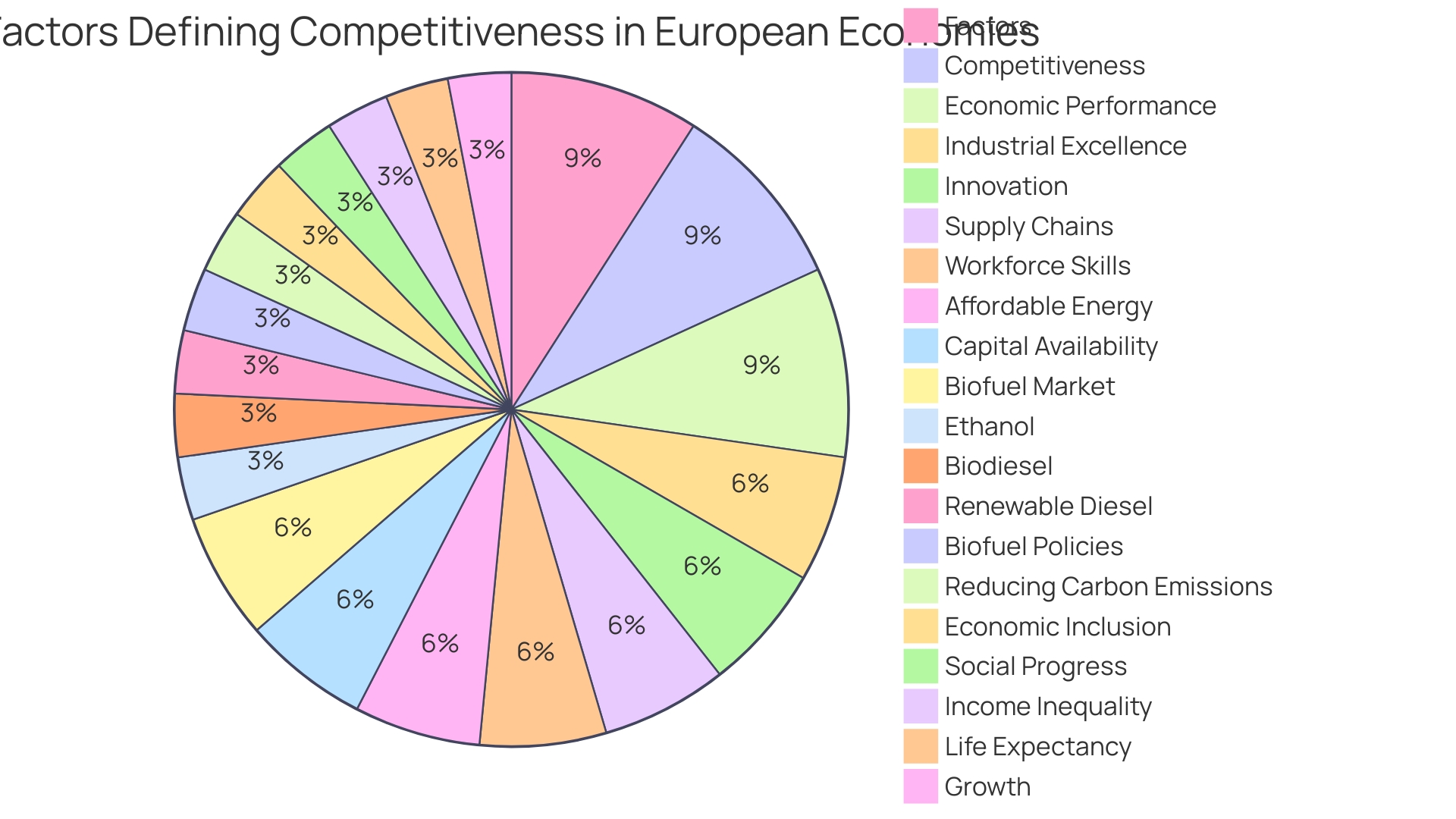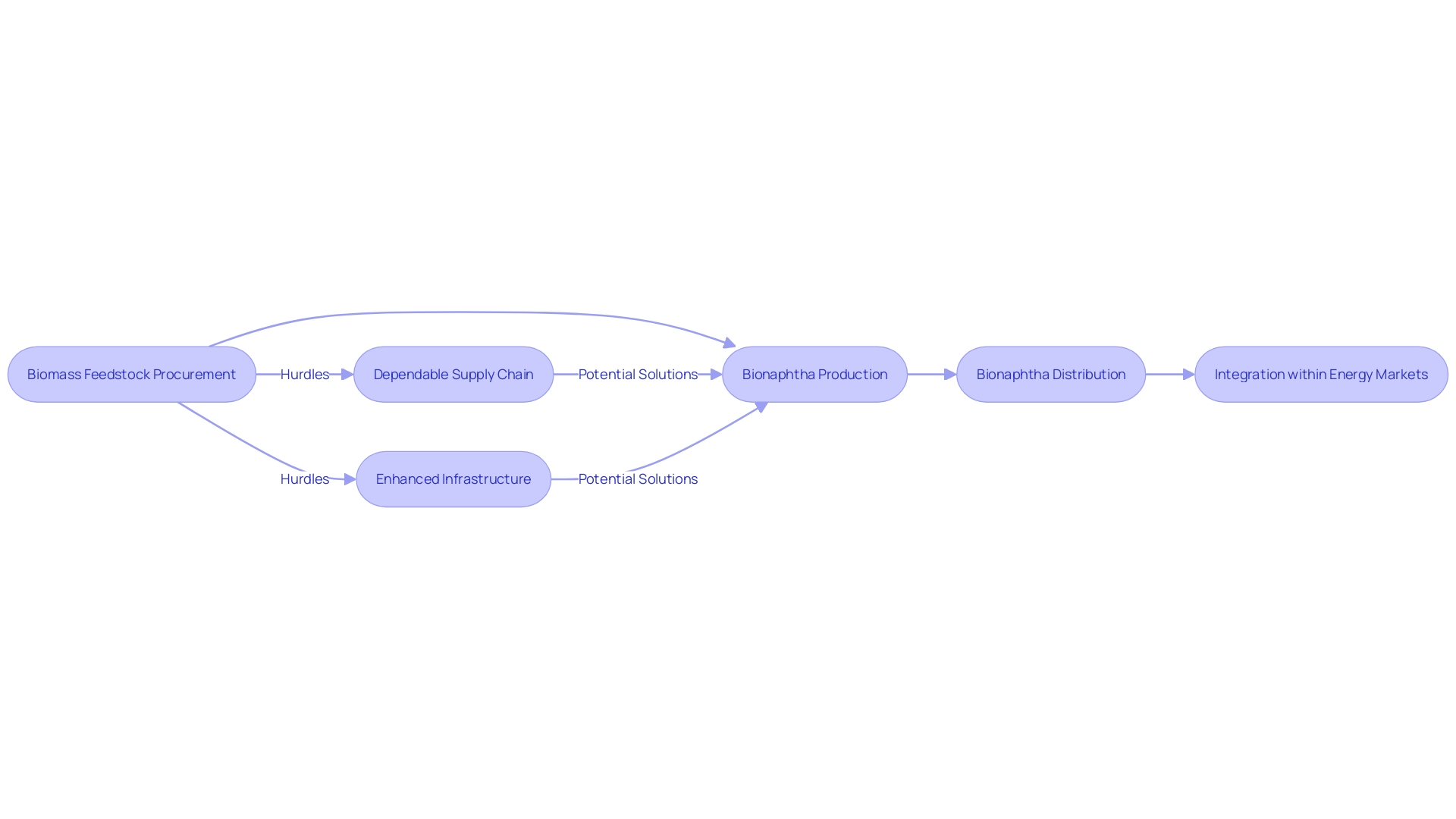Introduction
Renewable naphtha, also known as bionaphtha, is a game-changer in the renewable fuels industry. Derived from biomass sources like plant oils and animal residues, bionaphtha undergoes a meticulous hydroprocessing process to produce a cleaner fuel with a significantly lower carbon footprint. This innovative approach not only revolutionizes the biofuel industry but also presents the opportunity to utilize carbon dioxide as a valuable resource for fuel production.
With industry leaders driving the growth of renewable projects and policies supporting the sector's expansion, the integration of bionaphtha into the market is a tangible reality. In this article, we will explore the sustainability benefits of bionaphtha, its diverse applications in fuel blending and bioplastics production, the market demand and growth prospects, the regulatory environment, and a case study on its integration in European markets. We will also discuss the challenges and opportunities faced by the bionaphtha industry, highlighting the potential for a robust and sustainable future in energy and material production.
What is Bionaphtha and Its Production Process
Renewable naphtha, also known as bionaphtha, represents a significant stride in the transition towards sustainable fuels. Extracted from biomass sources such as plant oils, animal residues, and other organic matter, its production process is a sophisticated form of hydroprocessing. This method meticulously purifies the feedstocks and transforms triglycerides into hydrocarbons, ultimately yielding a cleaner fuel that mirrors the performance of its fossil-based counterparts, but with a substantially lower carbon footprint. Pioneering research, like that from the University of Wroclaw, has led to internationally patented technologies that could revolutionize the biofuel industry by enabling these renewable resources to complement and even replace conventional energy sources, thus supporting a smoother integration into the existing energy infrastructure. Recent advances in the field suggest that carbon dioxide, traditionally viewed as a byproduct of industrial activity, could be reutilized to produce fuels and other valuable chemicals, such as lower olefins and alcohols. This innovative approach aligns with the fluctuating nature of renewable energy supply and represents a shift towards a more resilient and environmentally conscious production paradigm. Furthermore, industry leaders have demonstrated a commitment to these sustainable practices, with large-scale renewable projects being developed and a growing emphasis on policies that foster the growth of the renewable sector. The integration of renewable naphtha into the market is not merely a theoretical possibility; it is an actionable reality, driven by expertise and a shared vision for a greener future.

Sustainability Benefits of Bionaphtha
Renewable naphtha, also known as bio naphtha, is carving out a significant niche in the sustainable energy sector. Its production leverages organic waste and biomass, effectively turning what would be pollutants into valuable fuel. This innovation not only diminishes greenhouse gas emissions but also champions resource efficiency by utilizing feedstocks that would otherwise contribute to waste. The environmental advantages of bionaphtha are further underscored by its low sulfur content and the absence of other deleterious pollutants, which present a stark contrast to their fossil fuel counterparts.
Contributions to the field from experts like Professor Andrzej Vogt from the University of Wroclaw highlight the fusion of academic research with practical applications in renewable energy. His work with BIOTERRAN exemplifies how biofuels can bolster the reliability of energy supply by complementing intermittent sources like wind and solar power. The synergy created by integrating biofuels into existing energy infrastructures is a testament to the potential of renewable naphtha as a sustainable energy solution.
Meanwhile, the issue of plastic waste, a significant environmental concern, is being combatted through advances in renewable fuels. The production of renewable naphtha offers a pathway to mitigate the overwhelming plastic waste that burdens our ecosystems. The current global discourse on a plastics treaty underscores the urgency of developing alternatives to traditional plastic production methods.
Incorporating biofuels into the global energy matrix is increasingly pressing. As evidenced by the launch of the methanol-powered container ship 'Laura Maersk,' the quest for greener shipping solutions is gaining momentum, underscoring the role of biofuels in reducing the carbon footprint of international trade.
With renewable naphtha at the forefront of the sustainable energy transition, the industry continues to evolve, reflecting the collaborative efforts of scientists, engineers, and policymakers dedicated to fostering a cleaner and more resilient energy future.
Applications of Bionaphtha: Fuel Blending and Bioplastics Production
Renewable naphtha is not just an environmentally friendly alternative to fossil fuels; it is a versatile actor on the stage of green energy and sustainable materials. By blending renewable naphtha with conventional gasoline and diesel, we can significantly cut down on carbon emissions, making an immediate impact on our carbon footprint. This bio-based liquid is also a key player in the bioplastics industry, serving as a feedstock that paves the way for more sustainable alternatives to traditional plastics.
As we delve into the realm of bioplastics, it's clear that renewable naphtha is a beacon for the circular economy. It's not only reducing our reliance on fossil fuels but also offering a sustainable pathway for the plastics industry. For instance, research from the University of Wroclaw in Poland, led by Professor Andrzej Vogt, has resulted in internationally patented technology that enhances the production of biofuels, including renewable naphtha, which supports the integration of renewable energy sources.
The economic impact of biobased products, such as those derived from renewable naphtha, is significant. A recent report highlighted that these products have reduced the consumption of fossil fuels by an estimated 10.7 million barrels, assuming an 80% reduction in 2021. This translates to a remarkable reduction in greenhouse gas emissions—around 12.7 million metric tons of CO2 equivalents annually. Furthermore, the biobased products industry is a substantial economic contributor, employing 3.94 million people and adding $489 billion to the U.S. economy in 2021, marking a 5.1% increase from the previous year.
From powering electrical panels in manufacturing to being the backbone of biorefineries, renewable naphtha's role is pivotal. For example, Fibenol's biorefinery in Estonia, using wood production residues, showcases the potential for renewable naphtha to be produced locally, reducing transportation costs and environmental impact.
In conclusion, renewable naphtha is not just a component of green fuels; it's a catalyst for a sustainable future in energy and material production. It's a testament to the power of innovation and the potential for harmonious integration of renewable energy sources into our existing infrastructure, driving us toward a more sustainable and economically viable future.
Market Demand and Growth Prospects for Bionaphtha
The trajectory of bio-based naphtha, commonly known as bionaphtha, is on an upward trend, bolstered by the global drive towards sustainability and reduced carbon footprints. The push for renewable fuels, including bio naphtha, has been further accelerated by legislative support and incentives from governments and regulatory bodies worldwide. With this momentum, the bionaphtha market is poised for considerable expansion in the near future.
Key regions are making significant strides in this sector, with Europe leading the charge. The European Union's commitment to biofuel utilization is evident with the integration of ethanol, biodiesel, and renewable diesel into its energy mix. The biofuel market in European countries such as France, the UK, Germany, and Poland is thriving due to supportive policies and a robust framework that encourages the adoption of bio-based fuels.
The impact of COVID-19 was felt across all major sectors, including the biofuel industry, with lockdowns and operational halts disrupting supply chains and stymieing market demand. However, as industries resumed activities, demand for biofuels like bionaphtha stabilised and began to climb.
The automotive industry, a major consumer of bionaphtha, is particularly keen on integrating this renewable fuel to meet carbon neutrality objectives. The strategic shift to bionaphtha is informed by a wealth of market research and data analysis, which continually updates to reflect market trends and insights, ensuring that decision-makers have access to the most current and comprehensive information.
In summary, the future of bionaphtha is marked by a collaborative effort of policy support, industry adoption, and rigorous market analysis, all contributing to its anticipated growth and significance in the renewable energy landscape.

Regulatory Environment and Legislative Support
Regulations and policies are significantly influencing the trajectory of bionaphtha within the energy sector. Governments worldwide are implementing renewable fuel standards and blending mandates that are pivotal in driving the integration of bionaphtha into the transportation fuel mix. These legislative frameworks are not only promoting the use of renewable fuels but also providing financial support mechanisms such as incentives and subsidies to stimulate the production and adoption of bionaphtha.
In light of the International Energy Agency's Sustainable Development Scenario (SDS), which aligns global energy systems with the Paris Agreement's climate objectives, the support for bionaphtha is more crucial than ever. The SDS outlines a feasible route to meet energy-related sustainable development goals, including universal access to modern energy and significant reductions in air pollutant emissions. This transition is underpinned by policy actions that encourage the production of cleaner fuels like bionaphtha.
Moreover, innovative research such as that from the University of Wroclaw in Poland, where Professor Andrzej Vogt has developed patented BIOTERRAN technology, underscores the importance of academic contributions to the evolving renewable fuels landscape. These advancements ensure that biofuels like bionaphtha can be seamlessly integrated into existing energy infrastructures, bolstering their role in a diversified energy mix.
As industry participants seek to capitalize on the expansion of bioprocess technology markets, driven by increasing demands for vaccines and therapeutic proteins, the importance of regulatory support for renewable naphtha production becomes even more apparent. The rise in biopharmaceutical outsourcing further emphasizes the need for efficient bioprocessing systems that comply with regulatory standards, highlighting the symbiosis between innovation, market dynamics, and legislative policy in shaping the future of renewable fuels like bio naphtha.
Case Study: Integration of Bionaphtha in European Markets
Europe's energy landscape is witnessing a significant shift with the incorporation of bio-based products like bionaphtha. This transition is underscored by the European Union's deep commitment to environmental and climate change mitigation objectives, as encapsulated in the European Green Deal (EGD). The strategic integration of bionaphtha into the energy mix is becoming increasingly prominent as the EU seeks to modernize its agricultural, forestry, energy, and industrial sectors through biotechnology and biomanufacturing. The regulatory frameworks and climate policies, including the 'Fit for 55' package, are driving the growth of renewable fuels like bionaphtha, with proposals set to increase renewable content in biofuels to 29% by 2030.
The EU's focus on phytoremediation as an enabling solution for soil remediation dovetails with the production of advanced biofuels like bionaphtha, creating a synergy between environmental stewardship and energy innovation. However, the legal and policy frameworks in the EU present both challenges and opportunities for the full implementation of phytoremediation and the subsequent conversion of output materials into renewable fuels.
A recent case study exemplifies this burgeoning sector, as it charts the collaborative efforts between renewable fuel producers, distributors, and end-users in establishing a robust supply chain for bionaphtha. This partnership has not only showcased the economic viability and production feasibility of bionaphtha but also its potential for market growth in Europe. The significance of these developments is punctuated by the remarks from Commissioner for Energy, Kadri Simson, who emphasized the EU's commitment to moving away from natural gas towards cleaner options like biomethane and renewable hydrogen, which includes derivatives like bionaphtha.
Market indicators and data from country-specific associations reveal that indigenous biogas production in the EU experienced a 1.7% increase in 2021, with Germany leading the charge. This underscores the potential for bionaphtha as part of the broader bioenergy sector, which is set to boom across various industries, including transport, heat and power, and large-scale applications such as marine and aviation. The comprehensive approach laid out by the EU serves as a valuable blueprint for other regions looking to foster similar renewable energy initiatives.

Challenges and Opportunities in the Bionaphtha Market
The burgeoning bionaphtha industry, while brimming with potential, encounters notable hurdles pertaining to the procurement and availability of sustainable biomass feedstocks in substantial volumes. Critical to the scalability and market competitiveness of bionaphtha is the assurance of a steadfast and dependable supply chain for these feedstocks. Moreover, the infrastructure requisite for the production and distribution of bionaphtha demands further enhancement to facilitate its broad-based integration within energy markets. Nonetheless, with the progressive surge in technological innovations coupled with a substantial uptick in capital investment, these barriers are surmountable, heralding the prospect of a robust bionaphtha sector. Leveraging digital solutions, such as those that streamline information flows and manufacturing processes, could provide a pivotal role in this advancement. As digital twins and AI-fueled learning systems gain traction, the potential for optimizing bionaphtha production processes becomes increasingly tangible. Indeed, these advancements are paving the way for a transition from traditional paper-based methods to centralized digital databases, enhancing efficiency and enabling a more seamless transfer of knowledge across various scales of operation. The European biofuel market, poised for rapid growth, illustrates the potential for renewable fuels to flourish under supportive policies and industry innovation. Europe's major economies, including France, the UK, Germany, and Poland, are actively promoting biofuels such as ethanol, biodiesel, and renewable diesel, showcasing the region's commitment to sustainable energy sources.

Conclusion
In conclusion, bionaphtha is a game-changer in the renewable fuels industry. Derived from biomass sources and processed to produce a cleaner fuel with a significantly lower carbon footprint, it offers a sustainable solution for energy and material production. Bionaphtha's sustainability benefits include reducing greenhouse gas emissions, championing resource efficiency, and offering a pathway for sustainable alternatives to traditional plastics.
With diverse applications in fuel blending and bioplastics production, bionaphtha can significantly cut down carbon emissions when blended with conventional gasoline and diesel. It serves as a feedstock for bioplastics, paving the way for more sustainable materials. The market demand for bionaphtha is on the rise, driven by global sustainability efforts and supported by legislative frameworks and incentives.
Regulations and policies play a crucial role in shaping the trajectory of bionaphtha, driving its integration into the transportation fuel mix. Governments worldwide are implementing renewable fuel standards and blending mandates, providing financial support mechanisms to stimulate its production and adoption.
The integration of bionaphtha in European markets showcases the collaborative efforts of renewable fuel producers, distributors, and end-users in establishing a robust supply chain. Europe, with its commitment to environmental objectives and supportive policies, leads the way in the adoption of bio-based fuels.
While challenges exist in terms of feedstock availability and infrastructure, technological innovations and capital investment are overcoming these barriers. Digital solutions and advancements in AI-fueled learning systems have the potential to optimize bionaphtha production processes and enhance efficiency.
In conclusion, bionaphtha is a catalyst for a sustainable future in energy and material production. Its versatility, sustainability benefits, and market demand make it a promising solution in the renewable fuels industry. With the support of policies, industry collaboration, and technological advancements, bionaphtha has the potential to drive us towards a cleaner and more resilient energy future.




